#large window valance
Photo
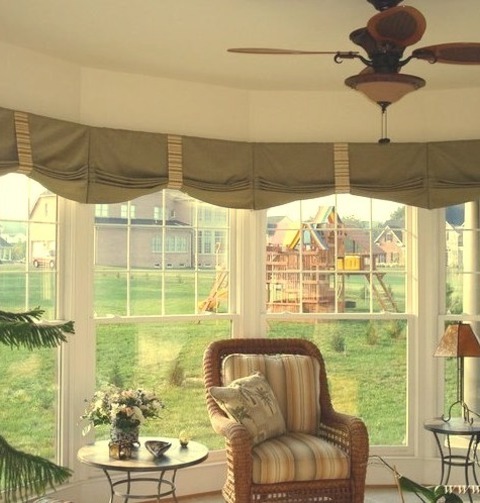
Sun Room DC Metro
Huge traditional sunroom concept
0 notes
Text
Sun Room DC Metro

Sunroom - enormous traditional sunroom concept
0 notes
Photo

Enclosed in Jacksonville
Mid-sized traditional enclosed dining room design example with beige walls and no fireplace.
#beige window valance#beige dining room ideas#dining room#enclosed#large dining room windows#patterned dining room valance#large dining room window ideas
0 notes
Photo
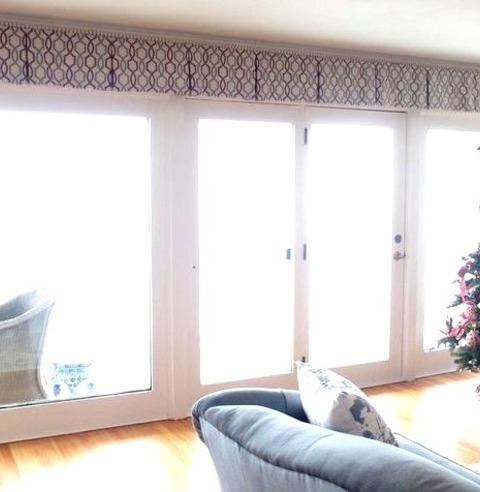
Family Room Enclosed in Bridgeport
Family room - large transitional enclosed medium tone wood floor and brown floor family room idea with white walls, a standard fireplace and a wood fireplace surround
#large windows and sliding door#vertical blinds for light control#large family room overlooking the water#box pleat valances in contemporary white blue and purple pri
0 notes
Text
Detroit Traditional Bathroom

Bathroom - mid-sized traditional master gray tile and ceramic tile ceramic tile and gray floor bathroom idea with an undermount sink, shaker cabinets, white cabinets, gray walls and marble countertops
#large pendant light#his and hers vanity#white bathroom vanity#large lampshade pendant#sheer window valance
0 notes
Photo

Freestanding Bridgeport
Inspiration for a beige-walled study room remodel with a medium-sized transitional freestanding desk and a medium-toned wood floor.
#button enhancements#large window over a new sofa and smaller window in adjacent#box pleat valances in a light blue decorator fabric
0 notes
Photo

Enclosed - Transitional Family Room
Inspiration for a large, enclosed, transitional family room remodel with white walls, a typical fireplace, and a wood fireplace surround.
#box pleat valances in contemporary white blue and purple pri#vertical blinds for light control#large family room overlooking the water#large windows and sliding door
0 notes
Photo

Family Room Enclosed
Family room - large transitional enclosed medium tone wood floor and brown floor family room idea with white walls, a standard fireplace and a wood fireplace surround
#box pleat valances in contemporary white blue and purple pri#large family room overlooking the water#large windows and sliding door#vertical blinds for light control
0 notes
Photo

Transitional Family Room in Bridgeport
Family room - large transitional enclosed medium tone wood floor and brown floor family room idea with white walls, a standard fireplace and a wood fireplace surround
#box pleat valances in contemporary white blue and purple pri#large windows and sliding door#family room#large family room overlooking the water#vertical blinds for light control
0 notes
Photo

Freestanding in Bridgeport
#Image of a study room with a medium-sized transitional freestanding desk#a brown floor#and beige walls. freestanding#large window over a new sofa and smaller window in adjacent#box pleat valances in a light blue decorator fabric#button enhancements#home office
0 notes
Photo

Transitional Family Room - Enclosed
#Family room - large transitional enclosed medium tone wood floor and brown floor family room idea with white walls#a standard fireplace and a wood fireplace surround large family room overlooking the water#enclosed#large windows and sliding door#vertical blinds for light control#family room#box pleat valances in contemporary white blue and purple pri
0 notes
Photo

Bridgeport Living Room Library
#Inspiration for a large#traditional#open-concept living room and library remodel with beige walls#no fireplace#and no television drapery has attached valance#matching ball trim on valance and tie back#corner window#living room#off white window trim and molding
0 notes
Photo

Traditional Living Room
#Example of a large classic formal and open concept light wood floor and brown floor living room design with gray walls#no fireplace and no tv draperies and valances#custom made curtains and drapes#draperies and window treatments#unique window treatments#window valance#window coverings#window blinds and shutters
0 notes
Photo

Philadelphia Music Room Living Room
#Photo of a large#elegant living room with a standard fireplace#a wood fireplace surround#a music area#and gray walls. The flooring is brown#and the walls are gray. amazing drapery hardware#custom window coverings#window treatments#wood flooring#valances#white wood mantel#large area rug
0 notes
Text

Mid-century was the era of shiny foil wallpaper and bright floral patterns. Here's a 1962 time capsule that has the hippest decor of the period. It's in Abington, PA, has 4bds, 2.2ba, and $449,900.

The entrance foyer is elegant in foil paper that looks like a mirrored wall.


The living room is open.

And, it's a large space.

The dining room has nice uplighting.


The kitchen is surprisingly large and is eat-in.

And, just like a modern open concept home, it shares space with the family room.

There's a nice modern fireplace and doors to the patio.

Check out the completely original blue guest powder room. They even have the custom made vertical blinds and they look brand new.

Very large back room has lots of space for freezers, a desk, whatever. It has the floral wallpaper with a matching shade and valance. It was also the fashion to wallpaper the ceilings.

Going up to the bedrooms. White wrought iron railings were popular.

The spacious primary bedroom.

Has a nice walk-in closet.

The yellow primary bath has a fancy original sink cabinet and a vanity table, plus the original yellow sink.

The secondary bedroom is large, too. It was also the fashion to wallpaper everything, like the closet doors and light switches.

This home is beautifully preserved. Original bath with an overhead light, shiny foil wallpaper, and double pink sinks.

This very large room is on the lower level.

Huge rec room has a picture window with a door to the yard.

Another guest powder with a corner sink.

Oh, it has a cedar closet for wool clothes so the moths don't get them.


A big basement with laundry and a workshop.

The garage is in the back of the house.

Patio.

There's lots of room for a pool on the .43 acre lot.

It's really a gem.
https://www.compass.com/listing/1863-hemlock-circle-abington-pa-19001/296867959288971521/
146 notes
·
View notes
Text
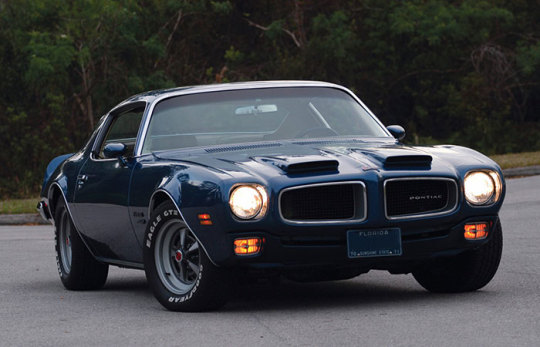
1970 Pontiac Formula 400
1970 Pontiac Formula 400 – The Other Performance Firebird
The story behind the development of GM’s F-body ponycars has been well documented. When Ford’s groundbreaking Mustang debuted in 1964, it tapped an emerging youth market that was hungry for a new type of car geared specifically to them. GM misjudged the public’s response to the Mustang and then scrambled to develop a similar style car after witnessing Ford’s unprecedented first model year sales success. Chevrolet was the lead division in engineering the F-body, and Pontiac grudgingly accepted the platform for their use in March 1966, only after GM management turned down PMD General Manager John DeLorean’s proposal for his own Mustang fighter.
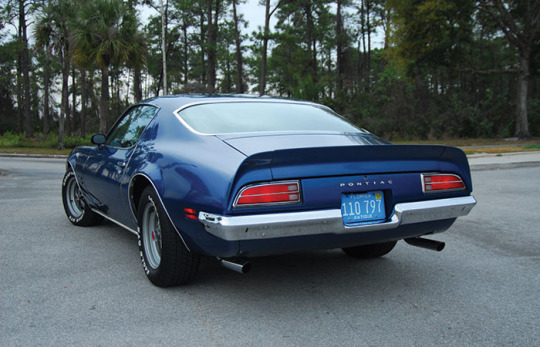
Pontiac didn’t have much time to transform the Firebird from its Camaro configuration before releasing it in February 1967. Their design and engineering lead time was significantly reduced and consequently, the Firebird was forced to use quite a bit of Camaro sheetmetal and other components. Competition between Pontiac and Chevrolet was intense, and having to use the other division’s engineering and design was a bitter pill for DeLorean’s maverick staff to swallow.
The circumstances surrounding the second generation Firebird were another story. Pontiac actually began working on their second generation just as the first Firebirds were hitting dealer showrooms. From design to engineering, Pontiac dominated the divisional rivalry, and this time around the Firebird would be all Pontiac from roof to road. There was little carried over to the second generation with the exception of the Trans Am nameplate and basic engine configurations. The suspension was tuned for more responsive handling with little compromise to ride comfort. Computer aided engineering chose the proper front and rear spring deflection rates predicated on model and usage. Stabilizer bars were used front and rear and the steering box was mounted ahead of the front axle for better response.

The sexy new body was rooted in GM styling chief Bill Mitchell’s infatuation with Italian sports car design. GM chose heavily from the rounded shapes of Ferrari and Maserati, and it showed in the smooth flow of fender lines, the curved window glass and raked windshield. One remarkable difference from pervious GM designs was the lack of a quarter window. Instead, the doors were lengthened to take up a larger portion of the quarter. The massive doors were heavy, however the side appearance was cleaner and far sportier. A lift bar door handle added to the smooth side look. Chrome was distinctively absent. The Native American-inspired Firebird emblem was on the decklid and the nose of all but base model cars.
Up front, the twin nostril grille and single headlamps provided a clean appearance, thanks to the use of Endura to create a bumper-less front end with a valance that cleanly rolled beneath the grille with large cross hair parking lamps mounted in the lower corners of the valance. At the rear, the smooth tumble home enhanced the Firebirds fuselage shape. The tail was flat and filled with twin tail lamps that met the quarter panel’s round rear profile. A recessed tag housing, thin blade chrome rear bumper, and rounded lower valance completed the rear end’s clean look.
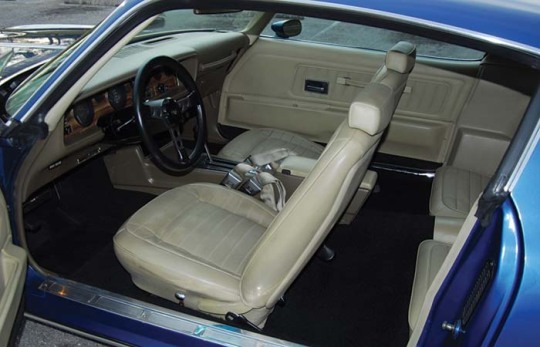
Inside, the Firebird’s wide, expansive dash housed the instrument panel consisting of three center nacelles for gauges, with smaller gauges at the right and room for the heater controls and additional switches and knobs. Directly below the center of the dash was another stack that contained the radio and ashtray. Even the base interior was sumptuous, with Pontiac’s indestructible Morrokide vinyl upholstery covering the bucket seats and door panels. The quarter trim panels and headliner were composed of molded polymeric material that provided a smooth surface and absorbed sound.
The 1970 Pontiac line up was composed of the base Firebird with 250 cid six, the mid range, 350 cid Espirit, the 400 cid Formula 400, and the 400 cid Ram Air Trans Am. Of the four, perhaps the most intriguing was the Formula 400. While the Trans Am was loaded with visuals like a shaker hood, fender mounted air extractors, wild front air spoiler, rear wheel opening air spoilers, and wide center stripe, the Formula had none of these. For those who preferred to have a muscular pony car sans the exterior adornments, the Formula 400 was just the ticket. Outside, the only difference between the mild mannered Espirit and the Formula was a special fiberglass hood that sported a pair of front reaching hood scoops (first considered for the Trans Am), sport style dual outside mirrors, and a pair of Formula 400 scripts below the Firebird nameplate on the fenders.
Under the sheetmetal, however, is where the $3,440 Formula’s credentials lay. Standard engine was the 400 cid V8 which generated 330 horsepower @ 4800rpm and 430 lbs.-ft. torque @ 3000rpm. Car & Driver tested a Formula 400 with this engine and automatic transmission and recorded a 0-60 acceleration time of 6.4 seconds and quarter mile performance of 14.7 seconds at 98.9mph.
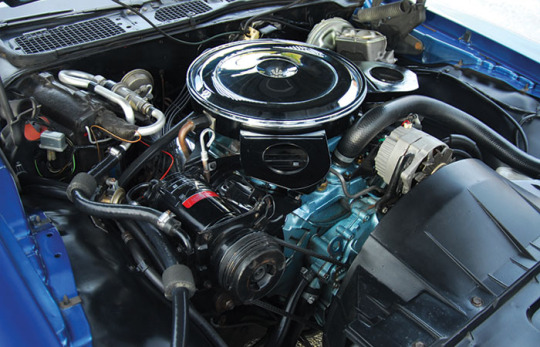

The optional engine was the Ram Air III V8, which produced 345 horsepower @ 5000rpm and 430 lbs.-ft. torque @ 3400rpm, thanks in part to a higher compression and a more aggressive camshaft profile. While Pontiac offered a 370 horsepower Ram Air IV, it never found its way into a Formula 400. On the Ram Air III equipped Formulas, the hood scoops were opened and a pair of rubber “boots” were fitted to the hood’s underside. They snugged up to holes in the air cleaner snorkels and fed cold outside air to the Rochester Quadra Jet carburetor. Subtle “RAM AIR” decals were affixed to the outboard sides of the hood scoops. The Formula’s 400 engine was dressed up with chromed air cleaner lid and valve covers. Dual exhausts with chrome tips were also standard.
Standard transmission was the M13, a heavy duty Dearborn three-speed manual box. A pair of Muncie four speeds was offered optionally, the wide ratio M20 and close ratio M21. Also optional was the M40 three-speed Turbo Hydra Matic transmission. A 3.55:1 rear axle ratio was standard, while air conditioned models received 3.31:1 ratios. Optional ratios were 3.07:1 and 3.73:1.
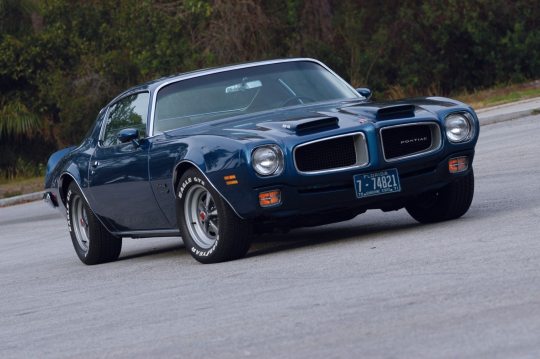
The Formula received a firmer suspension with 300-pounds/inch deflection in the front springs and 103 pounds/inch in the rear. The front stabilizer measured 1.125 inches in the front and the rear bar was .620 inches with firm control shocks mounted at all four corners. Front disc brakes were standard with rear drums. Standard tires were F70 x 14 on six-inch steel rims. The Trans Am’s tighter suspension was offered optionally. It consisted of 300 pounds/inch front and 126 pounds/inch springs in the rear, 1.250 inch stabilizer bar at the front, and fat .875 inch bar aft. Wider F60x 15 Polyglas tires mounted on 15 x 7 Rally II wheels without trim rings rounded out the package. Add the variable ratio power steering and power brakes and the Formula responded right now! to steering input and could dive deeper into corners and come out faster. Its only competition was big brother Trans Am and the Corvette.
Inside, the Formula’s instrument panel was faced in a wood grained appliqué. Optional was a Rally Gauge that placed an 8000-rpm tach in the left housing along with a small analog clock. In the smaller center housing was the engine temperature and oil pressure gauges. The right housing contained the 160mph speedometer with the smaller fuel gauge and voltmeter to the far right. Two consoles were offered, one between the front buckets that contained the transmission shifter, the other between the optional rear buckets.
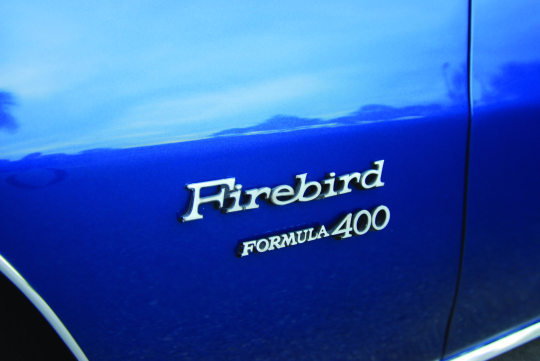
Of the 7,708 Formula 400s produced in 1970, 2,777 were equipped with manual transmissions. Exactly 4,931 were fitted with the M40 automatic transmission. One of those M40 equipped Formulas is owned by Jack Nichols of Orlando, Fla. Jack performed a complete restoration on the Formula several years ago, bringing it back to correct factory standards. The Atoll Blue Formula is fitted with the optional Ram Air engine, open scoops and underhood induction system. Inside, the tan Morrokide interior features console, optional three-spoke Formula steering wheel with padded rim, Rally gauges and air conditioning.
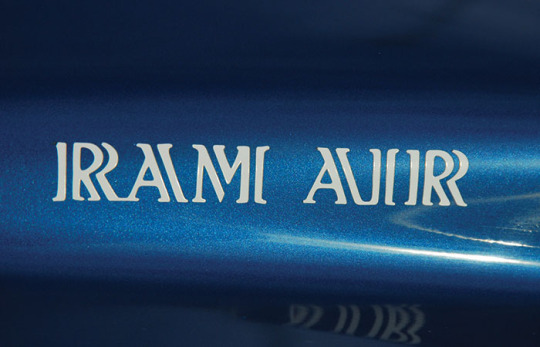
Text and Photography By Paul Zazarine
© Car Collector Magazine, LLC.
(Click for more Car Collector Magazine articles)
Originally appeared in the March 2008 Issue
#pontiac firebird#ram air#formula 400#pontiac#1970 Pontiac Formula 400#car#cars#muscle car#american muscle
256 notes
·
View notes